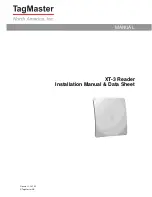
Fig.31 Abb.31
Fig.32 Abb.32
Fig.32aAbb.32a
CAPITOLO 4 INSTALLAZIONE
LE SEGUENTI OPERAZIONI DEVONO ESSERE EFFETTUATE
ESCLUSIVAMENTE DA PERSONALE TECNICO SPECIALIZZATO
MUNITO DI AUTORIZZAZIONE DA PARTE DEL PRODUTTORE O
DEL RIVENDITORE AUTORIZZATO. NEL CASO IN CUI QUESTE
OPERAZIONI VENGANO EFFETTUATE DA ALTRE PERSONE,
POSSONO RISULTARNE LESIONI PERSONALI E/O DANNI
IRREPARABILI AL SOLLEVATORE.
LISTA DI VERIFICA DEI REQUISITI DI
INSTALLAZIONE
Il sollevatore è progettato per essere installato in aree chiuse e adeguata-
mente protette dalle intemperie. Il luogo di installazione deve essere ben
lontano dalle aree destinate al lavaggio o alla verniciatura e lontano dalle
aree di deposito di solventi o vernici o dalle aree in cui ci sia un rischio di
atmosfere potenzialmente esplosive.
ADEGUATEZZA DELLE DIMENSIONI DELLO
SPAZIO DI INSTALLAZIONE E DISTANZE DI
SICUREZZA
Il sollevatore deve essere installato in osservanza delle distanze da muri,
colonne, altre macchine, ecc. indicate nella fig.31 e in ottemperanza a
qualsiasi requisito legislativo del paese d'installazione.
Verificare particolarmente:
1.Altezza minima: 5000mm inclusa l'altezza del veicolo, altezza mas-
sima dei bracci (ovvero 1900mm) e altezza superiore della colonna
(ovvero 2828mm)
2.distanza minima dai muri: 600mm
3.Area di lavoro minima: 700mm
4.Area della postazione di comando
5.Area per manutenzione, vie di accesso e di evacuazione di emer-
genza
6.Posizione in relazione ad altre macchine
7.Vicinanza alla linea di corrente per un allacciamento corretto
ILLUMINAZIONE
Tutte le parti della macchina devono essere illuminate con luce sufficiente per
garantire che le operazioni di regolazione e manutenzione specificate nel ma-
nuale possano essere eseguite, e senza zone d'ombra, luce riflessa, bagliore
ed evitando ogni situazione che potrebbe provocare affaticamento degli occhi.
L'illuminazione deve essere installata in ottemperanza alle leggi in vigore
nella località dell'installazione (la responsabilità viene assunta dall'installa-
tore di equipaggiamento elettrico).
PAVIMENTO
Il sollevatore deve essere installato su un piano orizzontale di cemento con uno
spessore minimo di 200mm e una resistenza =30N/mm2.
Il pavimento deve anche essere piano e livellato (10mm di tolleranza per il livel-
lamento). Consultare il produttore per quanto riguarda applicazioni speciali.
CHAPTER 4 INSTALLATION
THE FOLLOWING OPERATIONS MUST BE PERFORMED
EXCLUSIVELY BY SPECIALISED TECHNICAL STAFF WITH
AUTHORISATION FROM THE MANUFACTURER OR LICENSED
DEALER. IF THESE OPREATIONS ARE PERFORMED BY
OTHER PERSONS, SERIOUS PERSONAL INJURY AND/OR
IRREPERABLE DAMAGE TO THE LIFT UNIT MAY RESULT.
INSTALLATION REQUISITE CHECKLIST
The lift is designed for installation in enclosed areas suitably protected
from the weather. The place of installation must be well clear of areas de-
stined to washing or painting, and away from solvent or paint storage are-
as or areas where there is a risk of potentially explosive atmosphere.
SUITABILITY OF THE DIMENSIONS OF THE
PLACE OF INSTALLATION AND SAFETY
CLEARANCE.
The lift must be installed in observance of the clearances between walls,
pillars, other machines, etc. indicated in Figure 31 and incompliance with
any legislative requirements in the county of installation.
Check in particular:
1. Minimum height: 5000mm inclusive of height of vehicle, maximum
height of arms,( i.e. 1900mm),and upper post height (i.e.2828mm)
2. minimum distance from walls: 600mm
3. Minimum working area: 700mm
4. Area for command station
5. Area for maintenance, access and emergency escape routes.
6. Position in relation to other machines
7. Proximity to power supply for trouble-free hook-up
LIGHTNING
All parts of the machine must be uniformly lit with sufficient light to assure
that the adjustment and maintenance operations specified in the manual
can be performed, and without areas of shadow reflected light, glare and
avoiding all situations that could give rise to eye fatigue.
The lighting must be installed in accordance with the laws in force in the
place of installation (responsibility lies with the lighting equipment fitter)
FLOOR
The lift must be installed on a horizontal concrete bed with a minimum
thickness of 200mm built and a resistance 30N/mm2
The floor must also be flat and level (10mm of tolerance for leveling). Consult
the manufacturer with regard to special applications
33
















































